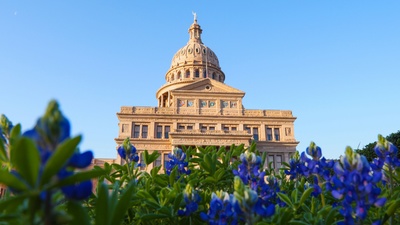
Employment & Labor
How States Are Combating AI Job Threats with Apprenticeships and Career Technical Education
September 16, 2025 | Lauren Johnson
When President Obama suggested in his 2014 State of the Union address that Congress should increase the federal minimum wage from $7.25 to $10.10 per hour, states were quick to advance the issue themselves. Since then, and with the help of the Fight for $15 campaign, there has been a flurry of activity aimed at raising the minimum wage — whether through legislation or voter-passed initiatives. Even local governments have set their sights on higher minimum wage requirements for local employers, which has set up a battle with some state legislatures. (See our previous coverage of this issue here, here, and here.)
Currently, 29 states and D.C. have minimum wages above the federal minimum wage. So, while minimum wage workers in a large number of states continue to see raises above the federal rate, workers in nearly half the states remain at the federal rate, which was last raised in 2009. Opponents of minimum wage increases, particularly those in the business community, argue that government-mandated wage increases are an ineffective way to address income inequality and force employers into tough decisions to make up for the higher payrolls, such as raising consumer prices, cutting employee hours, postponing hiring, or replacing employees with automation.
.png)
Historically, minimum wage increases have done well during election years. The issue’s popularity with voters explains both why lawmakers tend to pass minimum wage increases during election years and why voters almost always approve minimum wage increases via the ballot box in those years. For example, in 2014 (an election year for most states), 13 states and D.C. raised their minimum wage rates (nine states and D.C. raised them legislatively and four increased them via ballot measure). That trend slowed in 2015, which was not an election year in most states, with only one state (Rhode Island) increasing its minimum wage.
There was a presidential election, 12 gubernatorial races, and 5,923 state legislative seats up for grabs in 2016, which proved to be no exception to the trend that election years breed minimum wage increases. Three major states and D.C. passed legislation to eventually raise their minimum wages to $15 an hour (or nearly so, parts of Oregon will reach $14.75), and four additional states raised their minimum wages via ballot measures.
that will increase to $14.75, $13.50, and $12.50 per hour, respectively, by 2023. Scheduled increases will go into effect on July 1 of each year. Oregon became the first state to vary the state’s minimum wages by region. New York followed Oregon’s lead later in the year.
Future annual increases beyond $15 an hour will be indexed to inflation. Small businesses in New York City (defined as a businesses with 10 or fewer employees) will follow their own schedule for annual increases.
The Arizona Chamber of Commerce and Industry and several other business groups have filed a lawsuit attempting to block Proposition 206 from going into effect.
This month, 19 states will see their minimum wages rise. Of those 19 states, seven index their minimum wages to rise with inflation, which resulted in incremental increases this year, six states had scheduled increases due to previously passed legislation or ballot measure, and six states raised rates due to laws or ballot measures passed in 2016.
Increases range from a dollar or more in several states — Massachusetts (+$1.00), Maine (+$1.50), Washington (+$1.53), and Arizona (+$1.95) — to only a few cents in states that index their minimum wage to inflation.
Three additional states (Maryland, Nevada, and Oregon) have previously scheduled minimum wage increases set to go into effect on July 1, 2017. So, even if no new minimum wage legislation becomes law this year, minimum wage workers in 22 states can expect a raise at some point in 2017.
State lawmakers have already prefiled about 20 bills to increase state minimum wages before the 2017 session has even begun. Expect a flood of minimum wage-related bills when most state legislatures are gaveled into session later this month. However, don’t expect the level of minimum wage increases enacted this year to be as high as 2016 (or another election year).

September 16, 2025 | Lauren Johnson

July 16, 2025 | Sandy Dornsife

February 26, 2024 | Townsend Brown